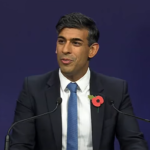Identify the Correct Statement
In today’s world, it is important to be able to identify the correct statement from a group of statements. With the abundance of information available, it can be difficult to determine which statement is true and which is false. Fortunately, there are a few tips and tricks that can help you identify the correct statement.
The first step in identifying the correct statement is to consider the source of the information. If the statement is coming from a reliable source, such as a government agency or a respected academic institution, then it is more likely to be accurate. On the other hand, if the statement is coming from an unreliable source, such as a blog or a social media post, then it is less likely to be accurate.
The second step is to look for evidence to support the statement. If the statement is backed up by facts, research, or other reliable sources, then it is more likely to be true. If the statement is not backed up by any evidence, then it is less likely to be true.
The third step is to consider the context of the statement. If the statement is being made in the context of a specific situation or event, then it is more likely to be accurate. If the statement is being made in a general context, then it is less likely to be accurate.
The fourth step is to consider the language of the statement. If the statement is written in a clear and concise manner, then it is more likely to be accurate. If the statement is written in a vague or confusing manner, then it is less likely to be accurate.
Finally, it is important to consider the intent of the statement. If the statement is being made with the intent to deceive or mislead, then it is less likely to be accurate. If the statement is being made with the intent to inform or educate, then it is more likely to be accurate.
By following these tips and tricks, you can identify the correct statement from a group of statements. It is important to remember that no single method is foolproof, so it is important to use multiple methods to ensure accuracy.
FAQs
Q1. How can I identify the correct statement?
A1. To identify the correct statement, consider the source of the information, look for evidence to support the statement, consider the context of the statement, consider the language of the statement, and consider the intent of the statement.
Q2. What is the most reliable source of information?
A2. The most reliable sources of information are government agencies and respected academic institutions.
Q3. What is the best way to determine if a statement is accurate?
A3. The best way to determine if a statement is accurate is to look for evidence to support the statement.
Q4. How can I tell if a statement is being made with the intent to deceive or mislead?
A4. To tell if a statement is being made with the intent to deceive or mislead, consider the context of the statement and the intent of the statement.
Q5. Is there a foolproof method for identifying the correct statement?
A5. No, there is no single foolproof method for identifying the correct statement. It is important to use multiple methods to ensure accuracy.
Q6. What should I do if the statement is written in a vague or confusing manner?
A6. If the statement is written in a vague or confusing manner, it is less likely to be accurate. Consider the context of the statement and the intent of the statement to determine if the statement is accurate.
Q7. Is it important to consider the source of the information?
A7. Yes, it is important to consider the source of the information. If the statement is coming from a reliable source, such as a government agency or a respected academic institution, then it is more likely to be accurate.
Q8. What is the best way to determine if a statement is backed up by facts or research?
A8. The best way to determine if a statement is backed up by facts or research is to look for evidence to support the statement.
Q9. How can I tell if a statement is being made in a general context?
A9. To tell if a statement is being made in a general context, consider the context of the statement. If the statement is being made in a general context, then it is less likely to be accurate.
Q10. Is it important to consider the intent of the statement?
A10. Yes, it is important to consider the intent of the statement. If the statement is being made with the intent to deceive or mislead, then it is less likely to be accurate. If the statement is being made with the intent to inform or educate, then it is more likely to be accurate.


